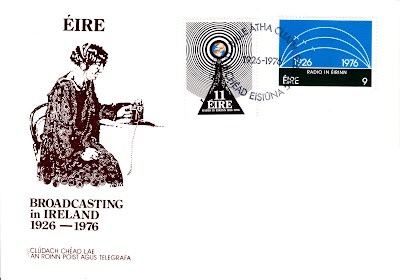The
scholar-poet Dr. Douglas Hyde, who later became the first President of
Ireland, inaugurated the State-controlled service on 1st January, 1926.
The first studio was in Dublin and the station was named Dublin 2 RN.
Shortly afterwards Cork acquired a studio, identified as 6CK. Early
Irish broadcasters proved remarkably imaginative in the use of the
medium. They helped to develop broadcast drama as a genuine art form
and they were among the first to use radio for the live coverage of
sport.
In 1932 a high-power transmitter (strength 60 kw, soon
increased to 100 kw.) was opened near Athlone in the centre of Ireland.
The service became known at home and abroad as Radio Eireann Radio of
Ireland-and its possibilities could now be fully exploited. The post-war
years saw the formation of important professional groups within the
broadcasting service, such as the Radio Eireann Players, the Radio
Eireann Singers and the Radio Eireann Symphony Orchestra.
A
television service was opened in 1961 and the State handed over control
of broadcasting to a corporation, now called Radio Telefis Eireann,
established by act of parliament. RTE radio continued to develop. A VHF
(FM) network was built, stereo broadcasts became common and a subsidiary
service in the Irish language (Radio na Gaeltachta) was set up with
headquarters in the West of Ireland. A powerful new transmitter
(strength 500 kw) was brought into use in 1975. Irish broadcasts could
be heard in Britain and many parts of Europe on 530 metres (566 kilo
Hertz).


No comments:
Post a Comment